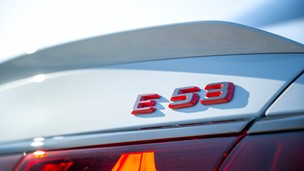Not a lot of fuss has been made about it, but Hyundai has quickly followed up the introduction of the new-generation i30 hatchback - see review - by bringing in an estate equivalent.Called the Tourer, the latest model is more than seven inches longer than the hatch, though slightly shorter than the previous i30 Estate. All of the extra length is at the back, so as you can imagine there's quite an increase in luggage capacity. With the rear seats up the Tourer offers 528 litres, and if you fold them down (they nearly go flat, but not quite) the figures jumps up to 1642 litres.That's probably enough for most people, but if load-carrying ability is critical to your choice of car you might like to know that the Tourer is slightly more spacious than the estate version of the Renault Megane, and considerably more so than the equivalent Ford Focus, Vauxhall Astra and Volkswagen Golf. On the other hand, it lags some way behind the Peugeot 308 SW and the Skoda Octavia estate, and will probably be slightly shy of the forthcoming Kia cee'd SW if that car has a similar capacity to the current one.A minor criticism I have of the i30 hatch is that the load sill is higher off the ground than it needs to be. The Tourer has no such problem. The tailgate comes all the way down to bumper level, and it's also very wide. Other than providing a member of staff to make you a cup of tea and lift the luggage into the car for you, I don't see what else Hyundai could have done to make the job easier.This is good and sensible design, and Hyundai should be applauded for it. At the same time, the company should be ridiculed for its policy on window design. The press pack for the Tourer says that, at the rear, this has been devised with a view to "increasing interior luminosity and benefiting visibility", but this is industrial strength pigswill. There is simply not enough glass back there, as you will immediately notice the first time you try to reverse the car.And, while we're on the subject, the windscreen pillars are far too thick. It's advisable to look round both sides of the one nearest you at junctions before moving off, and on the open road you can easily lose sight of oncoming traffic on right-hand bends. Several times during this test I realised that if the bike, car or pickup approaching me on such a corner had strayed across the white lines in the middle of the road, I wouldn't have known a thing about it until I got a face full of airbag, followed by who knows what else.These design failings are all the more perplexing when you consider what a good job Hyundai has made of the rest of the car. One thing that particularly appealed to me is that it offers unexpected delights on a cross-country run. There's quite a lot of body movement, but it's all under control, and you can really spank along a favourite piece of tarmac (in my case a splendid coastal route blessed with almost every imaginable kind of corner) if your mood and the road conditions allow.I concede that few people who buy an i30 Tourer will be interested in this sort of thing, but the very same attributes which make it such fun to drive quickly also help its case when it's going slowly. Specifically, the way it reacts quickly (but not sharply) to light steering inputs makes it particularly easy to manoeuvre in urban areas.This, at least, is the case with the 1.6 petrol Classic tested here, which is so far the only Tourer I've driven. It has the lightest engine in the range, the other options being heavier diesels, and it sits on 16" steel wheels (fortunately covered by reasonably attractive plastic trims) and sensible 65-section tyres. A diesel version with larger alloy wheels and lower-profile rubber might handle less impressively, and certainly wouldn't match this car's excellent ride quality.The petrol engine itself isn't the Tourer's best feature. It produces a maximum of 118bhp, but you have to rev it very hard - 6300rpm! - to make that happen, and on full throttle below about 5000rpm it feels quite strangled. In normal everyday driving this is not immediately important, but it does mean you have to be prepared to drop down one or more gears for an overtaking manoeuvre or hill ascent which a diesel could easily manage without any downshift at all. If Hyundai reduced the outright power but added some extra urge in the mid-range, it would be fine with me.Then again, the engine is impressively quiet, which is just as well since the gearing is on the low side, and although fuel economy and CO2 emissions are officially nowhere near those of the diesels, you do at least save £1800 on purchase price.This particular car is in fact the cheapest in the range at £16,195. For that you get, in addition to all the above, plenty of room for four six-foot adults, plus air-conditioning, LED daytime running lights, electric front (but not rear) windows, a multifunction steering wheel, roof rails and USB and auxiliary connections for the audio system.The interior is attractively designed, but you can see how Hyundai has kept the price down by not being extravagant with the materials. Still, for the money it's a very attractive, practical and enjoyable family estate, and one I would be very happy to own if only Hyundai made it easier to see out of. Engine 1591cc, 4 cylinders Power 118bhp Transmission 6-speed manual Fuel/CO2 42.8mpg / 150g/km Acceleration 0-62mph: 11.2 seconds Top speed 118mph Price £16,195 Details correct at publication date

Our Rating



